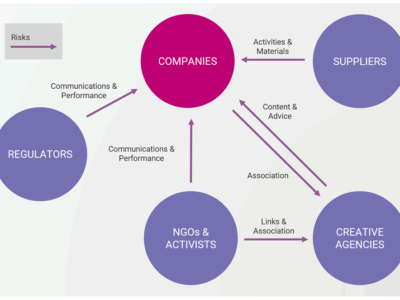“In a normal evolutionary environment, there’s enough diversity to cushion the system when something catastrophic happens.”
James S.A. Corey (Leviathan Wakes)
Tuesday 11 October was Ada Lovelace Day – an international celebration of achievements by women in science, technology, engineering and maths (STEM). Ada lived and worked a few miles down the road from us. Growing up just down the road from such a pioneer of our modern world is an intriguing thought. How has gender diversity changed since her achievements?

Ada is generally credited as being the first computer programmer. In 1843, she, along which Charles
Babbage, published “what we would now call a computer program to generate Bernoulli Numbers. Whilst Babbage had written fragments of programs before, Lovelace’s was the most complete, most elaborate and the first published” (from //findingada.com/).
Ada Lovelace was a definitive anomaly in the social order of her time; a pioneering woman in a world where men dominated the sciences, engineering and society in general.
So, 173 years later how have things changed for women in STEM careers? One salutary statistic for US tech giants shows women hold just 18% of tech positions and 33% of all jobs, see this graph for an overview of jobs in the big firms.
Gender diversity – a leaky pipeline
The phenomena of STEM’s ‘leaky pipeline’ has been much researched. Though girls in secondary education tend to do as well, if not better than boys in STEM subjects at GCSE (15-16), their numbers following through to A levels (17-18) in Physics, Mathematics and Engineering reduce dramatically. For instance, the Institute of Physics notes that “For more than 25 years, only around 20% of students progressing on to A-level physics have been girls, despite about equal success between the genders in GCSE physics and science.”
In addition, the further pursuit of STEM subjects between girls who attend single sex schools and those in co-educational settings appears to vary. The Institute of Physics publications “It’s Different for Girls” and “Closing Doors – Exploring gender and subject choice in schools” note that “An implicit finding is that single-sex schools are significantly better than co-educational schools at countering the gender imbalances in progression to these six [STEM] subjects. ‘It’s Different for Girls’ (October 2012) showed this effect clearly in relation to physics and the other sciences.”
In 2015 the WISE Campaign published a comprehensive overview of statistics for gender and the sciences, highlighting the leaky pipeline effect, which appears to continue beyond the step from GSCE to A Level, and beyond to higher education and into employment. Each of these steps display a reduction in the proportion of women pursuing STEM subjects (though there are of course different balances between subjects).
If we look at representation in university courses (the supply side) the proportion of women studying computer and other sciences is either static or in some cases declining. However, this isn’t the only problem, women make up around half of the total university ‘workforce’, but only 29% of the science and engineering workforce (using US statistics https://ngcproject.org/statistics). The situation is similar in Europe and, in the UK, but worse still for engineering.
April 2017 update – STEM and gender in the US
Hazel Garcia of investmentzen.com has produced an infographic for STEM jobs in the United States which provides information on the gender balance of STEM jobs on a state by state basis, you can view the graphic here. The overview shows how many men are in STEM (computer, engineering, and science) occupations for every 1 woman in each state. Maryland has the smallest STEM gender gap with 2.1 men for every 1 woman working in STEM occupations, whereas the state with the largest STEM gender gap is Utah with 4.5 men for every 1 woman working in STEM professions (thanks to Hazel for sharing her work).
Diversity, sustainability and resilience
Is this just a gender issue? No, there is also under-representation in ethnic groups and people with disabilities. So does it matter? Diversity and inclusion issues are rising in profile in CSR/sustainability circles and in mainstream debates.
Diversity is important for two main reasons, firstly ethical, it’s simply not fair or defensible in terms of equal opportunities. Secondly, it’s dysfunctional – research has shown that diverse teams in research and business are more effective.
Issues of cause and effect can be difficult to untangle, and it’s always worth bearing in mind that correlation doesn’t necessarily imply causation. Nevertheless, the examples below suggest financial outcomes maybe related to diversity.
- A two year survey from Bersin by Deloitte on the relationship between maturity in talent management (generally the more mature approach is more inclusive and intentionally diverse) and financial performance found, among other things, that more mature companies in this area had “3 times higher cash flow per employee over a three-year period” than lower performing companies.
- The McKinsey Report “Why Diversity Matters” highlighted research which suggests: “Companies in the top quartile for racial and ethnic diversity are 35 percent more likely to have financial returns above their respective national industry medians”. And that “Companies in the top quartile for gender diversity are 15 percent more likely to have financial returns above their respective national industry medians”.
- Catalyst’s 2007 report “The Bottom Line: Corporate Performance and Women’s Representation on Boards” found that businesses with more women board directors demonstrate a range of clear financial benefits:
- “Return on Equity: On average, companies with the highest percentages of women board directors outperformed those with the least by 53 percent.
- Return on Sales: On average, companies with the highest percentages of women board directors outperformed those with the least by 42 percent.
- Return on Invested Capital: On average, companies with the highest percentages of women board directors outperformed those with the least by 66 percent.” (figures sourced here).
In addition to the financial arguments, there are also wider issues of fitness for the future. It has been suggested that the ways of thinking most suited to the development of sustainable solutions maybe related to gender. In her 2011 piece “Gender and the Sustainable Brain” Andrea Learned explored the importance of empathy and a focus upon understanding and developing interrelationships as a key part of sustainable thinking, and that while these traits have traditionally been thought of as ‘feminine’ “What if, despite the fact that the female gender seems most naturally suited for sustainable thinking and decision-making, it is actually socialization—not sex—that forms the basis for the incredible opportunity our culture has today?”.
Diversity in solutions
To pursue a sustainable future, we need more innovation and technical development to solve problems and seek solutions. While the uptake of STEM courses by underrepresented groups is vital, there’s also an inclusion issue in the workplace. Although many companies have identified this issue and some report on their progress in addressing it, achieving inclusion requires a greater level of ambition and application.
In addition to representation in STEM skills and careers which focus upon the development of sustainable solutions, there are also, as Andrea Learned notes, diverse ways of thinking and acting that may be vital to a sustainable future that are currently marginal to existing business and financial cultures. A focus upon competition and zero sum game outcomes, rather than upon recognising interdependence, collaboration and cooperation for mutual success, maybe less likely to deliver sustainability and equity over the long term.
While it can be dangerous to overextend biological or ecosystem metaphors when talking about human beings, it is nevertheless the case that resilient natural environments tend to be those which exhibit high levels of diversity – these simply provide a variety of ways for things to happen and to be accommodated – they have in-built multiple redundancy.
As Abraham Maslow said “If you only have a hammer, you tend to see every problem as a nail”, diversity represents a tool box of skills, insights, opinions and ideas, we ignore its value to a sustainable, equitable future at our peril.
DISCOVER MORE | Sustainability Issues
Carbon Neutral Communications
Despite considerable regulatory focus on carbon neutral claims, companies are still getting their communications wrong, so what is happening?
While many large companies now appear wary of making claims about carbon neutrality, we can still see considerable focus on these in the SME space, some …
Reputation risk and sustainability – who do you work with?
Reputation is widely regarded as one the most valuable assets of an organisation. Sustainability can also be an important contributor to both reputation and several dimensions of business value.
In this article we explore different dimensions of reputational risk, how it might be affected and how …
Sustainable Aviation?
On the 28 November 2023, the first long-haul passenger plane powered with ‘sustainable’ air fuel took off. SAF offers an ostensibly attractive path for decarbonisation for the airline industry – the lifecycle greenhouse emissions can be up to 70% lower than conventional fossil-based fuels.
While …
Greenwashing – dimensions of risk
Greenwashing – misleading communications on sustainability issues – has various dimensions of risk, but these are often overlooked, and their implications are insufficiently examined.
While greenwashing may appear as simply irritating, it actually causes a range of harm and presents multiple …
Sustainable transition – waiting for the underpants gnomes?
Dramatic changes are needed in business and industry to head off coming poly crises and build a prosperous future for the growing global population.
But plans for this ‘sustainable transition’ are few and far between and often lack credible substance to bridge the link between ambition and action. …
Avoiding strategic greenwashing – why your business strategy must be plausible
Worldwide regulators are tightening up on strategic greenwashing to protect consumers, business and market integrity. As further examples arise there is more, we can learn about what regulators will tolerate and what they require of companies.
Put simply, any leeway for general feel-good …
WEF Global Risks 2023 – What’s new and what’s changed?
While big picture environmental threats of climate change, nature loss and ecosystem collapse remain long term risks, geopolitical instability and the current cost-of-living crisis challenges present emerging challenges to the chance for global consensus and coordinated action.
The WEF (World …
2023 sustainable business trends and challenges – what to watch out for
From avoiding greenwashing to facing soaring business costs, 2023 is set to be a challenging year for most business leaders to navigate.
Regulators, customers and consumers have increasing expectations for good quality, consistent information on sustainability. Communication must be accurate and …
Sustainable value creation
Understanding the relationship between your organisation and the wider world, and identifying which issues, trends, dependencies and risks are material (important) to your business future is critical. Not just for measuring and managing impact, but also for developing resilience and responding to …
Something in the air – the burden of air pollution
Small particle air pollution – when will we clear it? PM2.5 (small particle) air pollution is one of the most harmful types for human health, exposure has been linked to heart and lung disease, mental health and many other conditions including stroke, cancer and mental health. Air pollution …












Leave a Reply